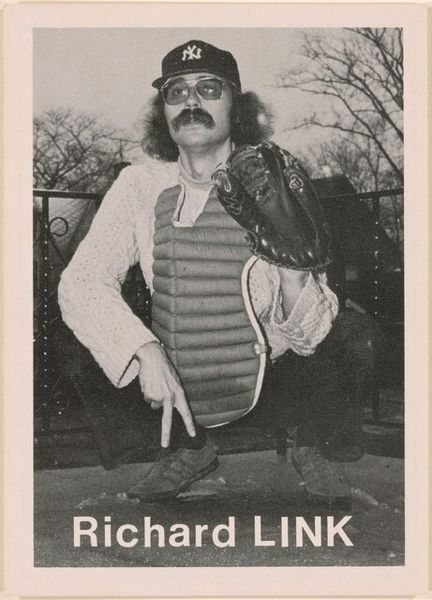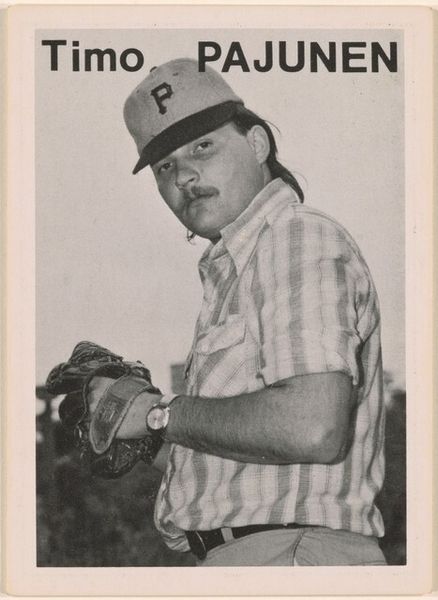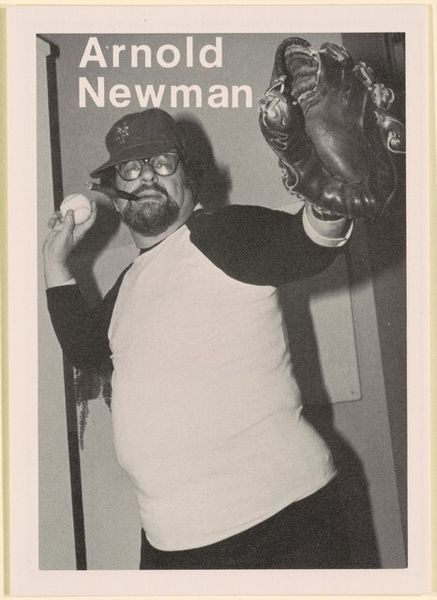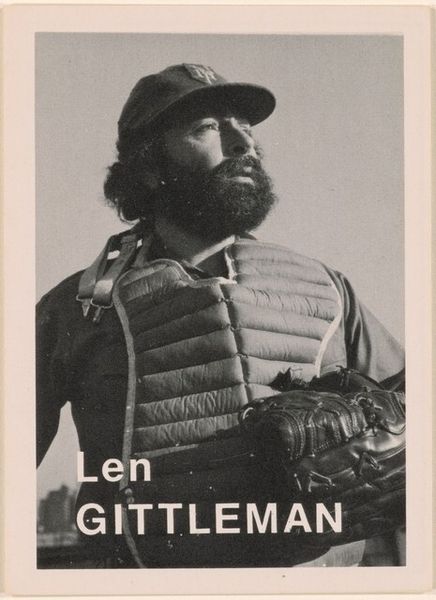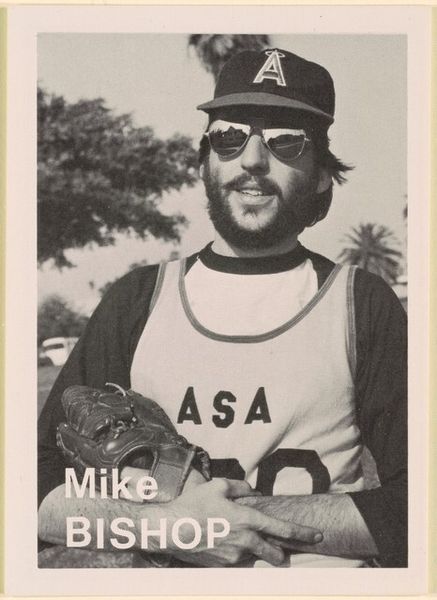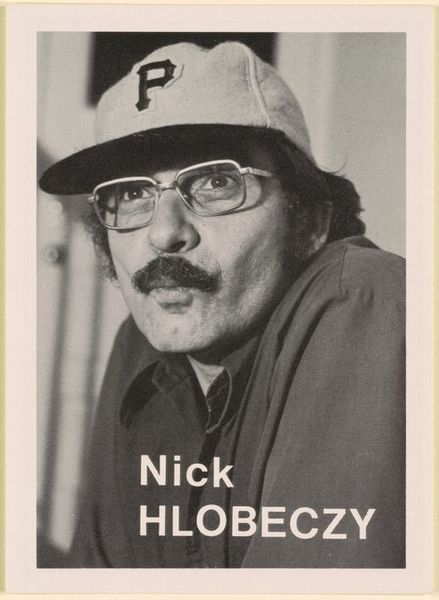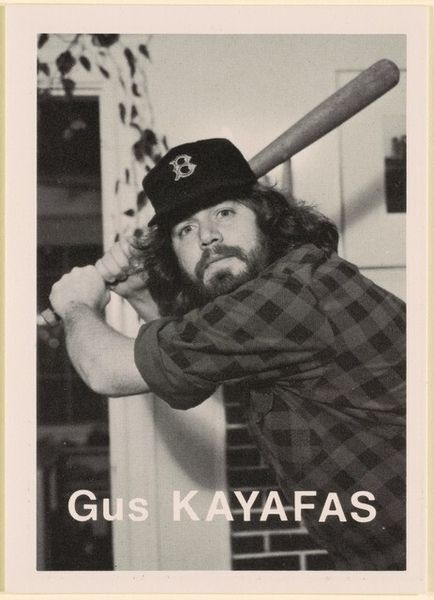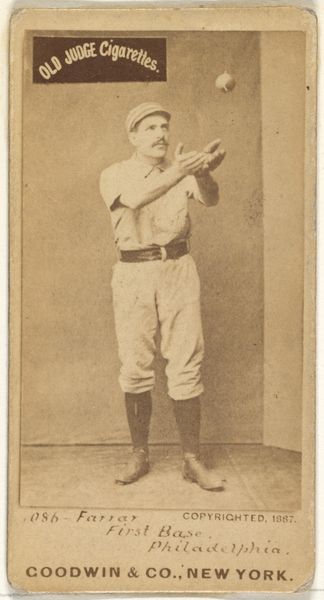
print, photography
#
portrait
#
print photography
#
self-portrait
#
conceptual-art
# print
#
photography
Dimensions: image: 8 × 5.5 cm (3 1/8 × 2 3/16 in.) sheet: 8.9 × 6.3 cm (3 1/2 × 2 1/2 in.)
Copyright: National Gallery of Art: CC0 1.0
Curator: I'm drawn to the energy in this photographic print. The image we’re looking at is a self-portrait from 1975 by Ken Josephson. The work depicts the artist himself sporting a baseball cap, mid-grin, baseball bat in hand, with the title of the print matching the name of the portrayed “Ken Josephson” superimposed onto the scene. What is your immediate impression? Editor: It’s unexpectedly lighthearted. The man has a twinkle in his eye. It evokes a very particular nostalgic feeling, one that links the subject to a working-class history perhaps through this somewhat awkward baseball photograph, with all the tension and irony that the game provides. It’s like he’s in on some private joke. Curator: I think Josephson understood the power of visual puns. The self-portrait becomes an exercise in playing with identity, persona, and public image, doesn't it? Photography, particularly in the 70s, became this interesting arena where artists started asking serious questions about the nature of representation and the art world, breaking with what were often strict traditions in the medium at that time. Editor: Exactly. And consider the social commentary here: baseball is intrinsically linked with Americana, deeply entwined with mythologies around masculinity, success, and belonging, right? He's using those signifiers to communicate something about his place in the world and maybe subtly question those very concepts through irony and performance. I bet it had some very personal layers to the artist as well, since a photograph speaks for itself, but even louder for the sitter or photographer. Curator: And, given that Josephson taught photography, there’s a layer about image construction and the photographer’s role too. How much of this persona is performance and how much is genuine? Editor: That's key, it invites the viewer into the artist’s perspective, challenging notions of objectivity inherent in photographic portraiture, highlighting how subjectivity is always an essential ingredient in these interactions. It highlights, through visual paradox, a questioning around visibility and recognition that expands toward much wider social issues. Curator: It’s quite refreshing to consider these kinds of works in our age of over-sharing and image saturation. We get a unique invitation, don't we, to think critically about what a "self-portrait" can truly convey? Editor: It leaves you reflecting, not just on the surface of the picture, but on the larger contexts and stories embedded within.
Comments
No comments
Be the first to comment and join the conversation on the ultimate creative platform.
